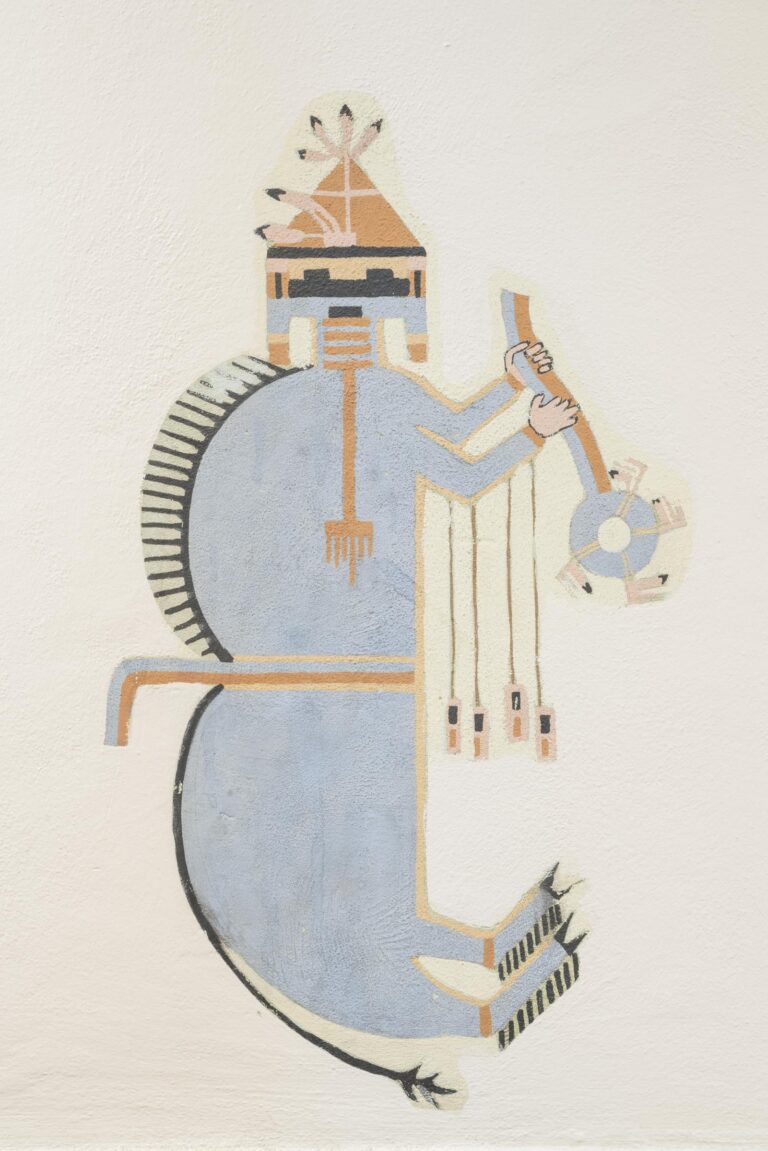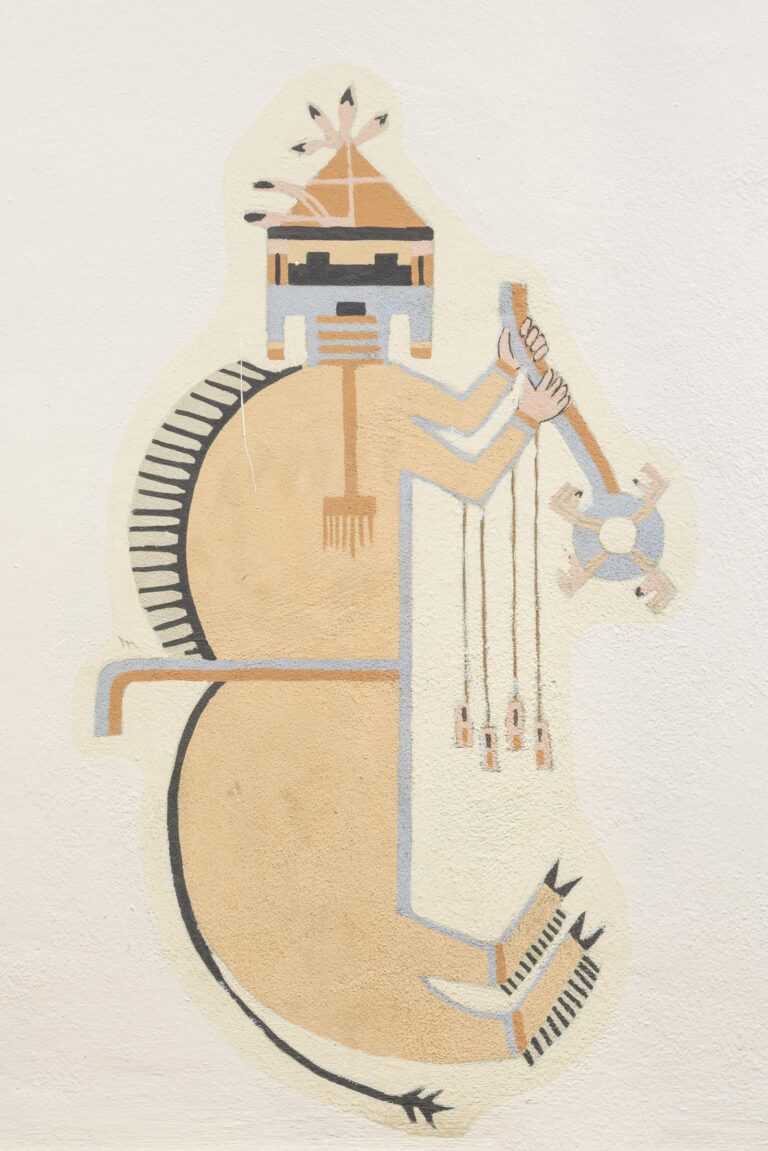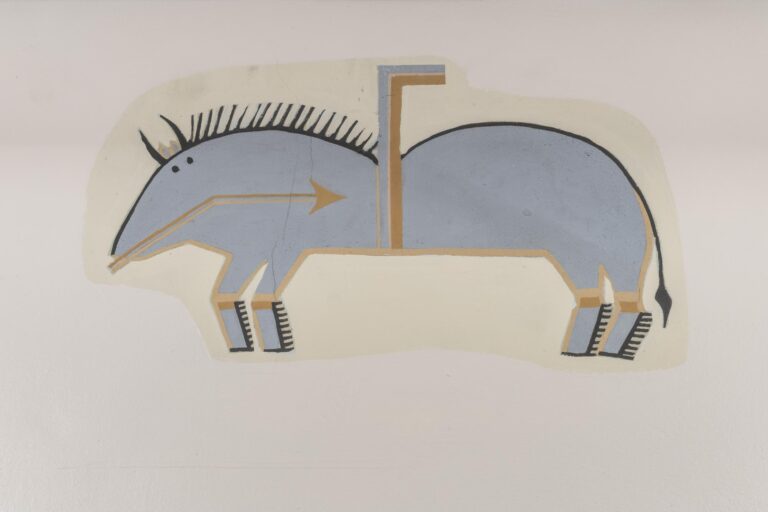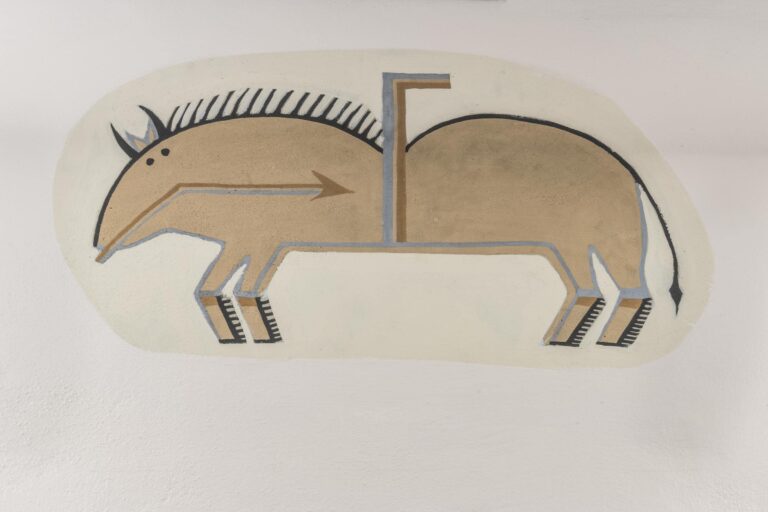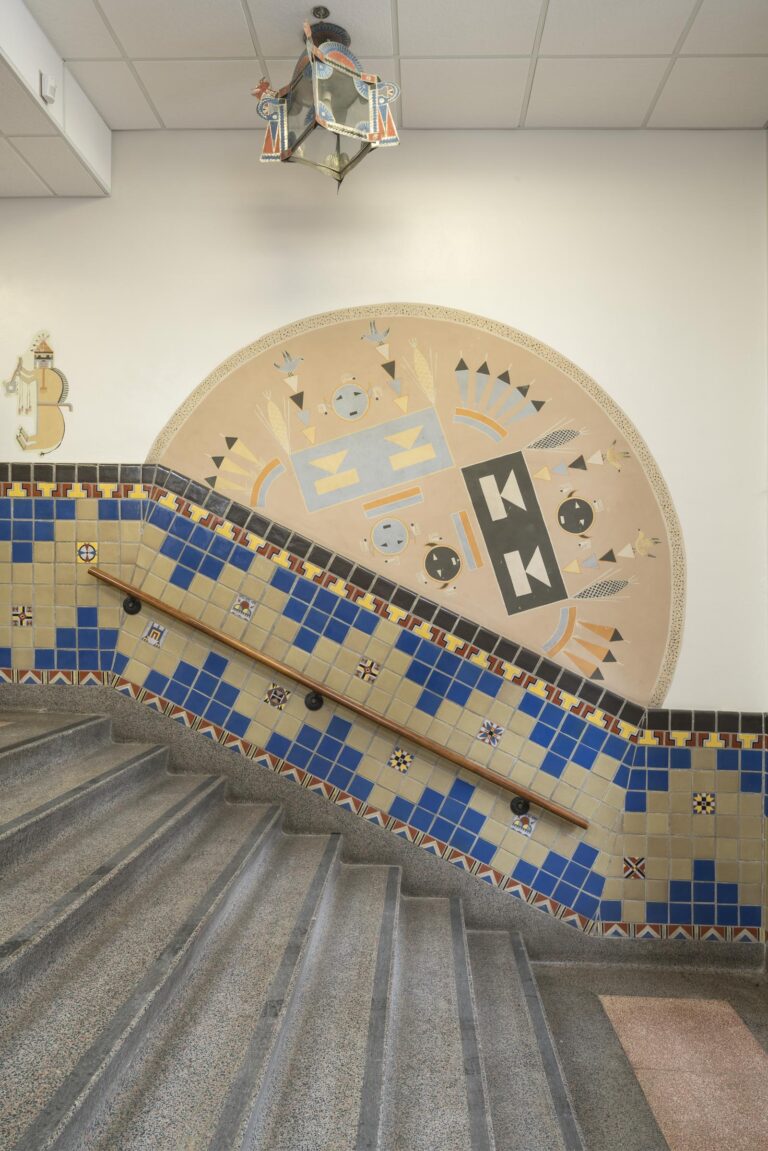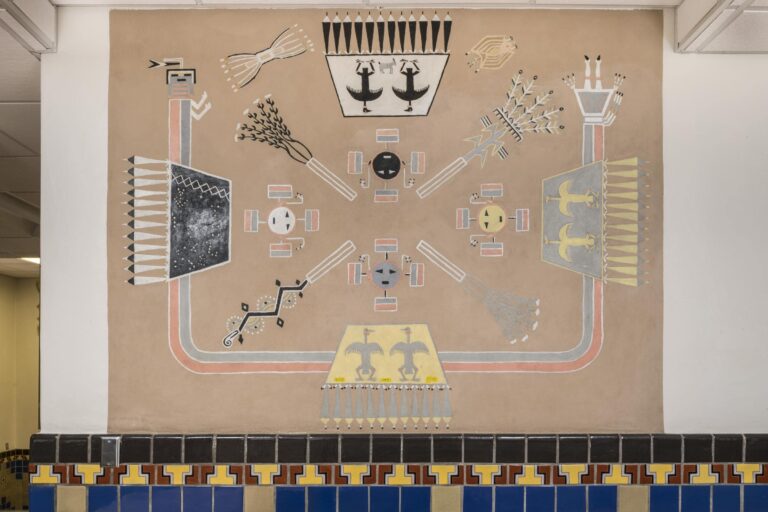This is one of sixteen wall paintings that decorate the first-floor lobby of the historic New Deal-built McKinley County Courthouse, reportedly made by “a young Navajo painter”1 in 1939 (the same year the courthouse opened). The wall paintings replicate designs and compositions originating from the Diné (Navajo) spiritual practice of sandpainting. The transition of sandpainting from a sacred, private ritual to a secular, public art form occurred at the turn of the 20th century as cultural tourism arose in the Southwest and a market for Native art developed. Diné artists navigated this transition by modifying sandpainting designs to offset their spiritual significance—swapping colors, eliminating certain elements, re-ordering patterns. The mural seen in this image highlights this transition as it incorporates the aesthetics and language of sandpainting with European-derived visual practices. Here, common sandpainting designs and symbols are arranged in a vertical wall composition (sandpaintings were historically created on the ground) to represent a figure in dimensional space—a ceremonial dancer standing on a surface surrounded by plants and/or a landscape.



